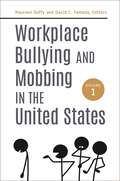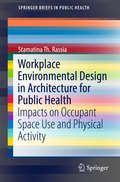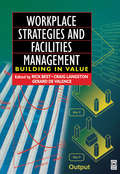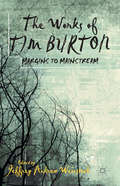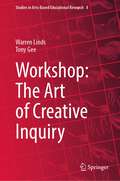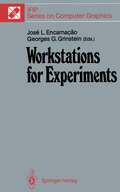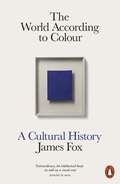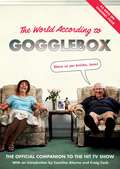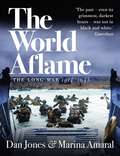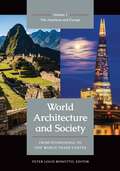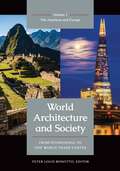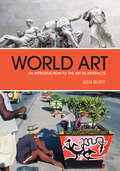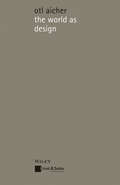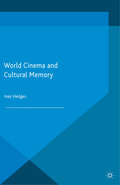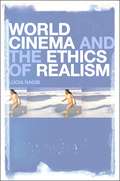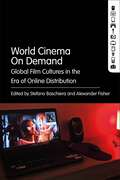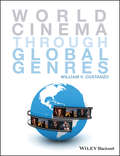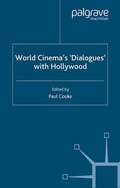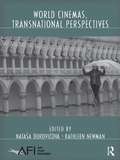- Table View
- List View
Workplace Bullying and Mobbing in the United States [2 volumes]: [2 volumes]
Offering multidisciplinary research and analysis on workplace bullying and mobbing, this two-volume set explores the prevalence of these behaviors in sectors ranging from K–12 education to corporate environments and exposes their effects on both individuals and organizations.Workplace Bullying and Mobbing in the United States provides a comprehensive overview of the nature and scope of the problem of workplace bullying and mobbing. By tapping the knowledge of a breadth of subject experts and interpreting contemporary survey data, this resource examines the impact of bullying and mobbing on targets; identifies what constitutes effective prevention and intervention; surveys the legal landscape for addressing the problem, from both American and (for multinational employers) transnational perspectives; and provides an analysis of key employment sectors with practical recommendations for prevention and amelioration of these behaviors.The contributors to this outstanding work include researchers, practitioners, and policy and subject-matter experts who are widely recognized as authorities on workplace bullying and mobbing, including Drs. Gary and Ruth Namie, cofounders of the U.S. workplace anti-bullying movement; Drs. Maureen Duffy and Len Sperry, internationally recognized authorities on workplace mobbing; and professor David Yamada, leading expert on the legal aspects of workplace bullying. The set's content will be of particular value to scholars and practitioners in disciplines that overlap with American labor and employee relations, industrial/organizational psychology and mental health, and law and conflict resolution.
Workplace Environmental Design in Architecture for Public Health: Impacts on Occupant Space Use and Physical Activity (SpringerBriefs in Public Health)
by Stamatina Th. RassiaThis concise volume analyzes the potential for the workplace environment—where so many people spend so much of their day—to improve workers’ capacity for health and wellness. It pinpoints the link between sedentary lifestyles and poor health, and explores the role of office spatial design in encouraging physical activity to promote physical activity, health and prevent disease. The featured research study tracks workers’ movement in a variety of office layouts, addressing possible ways movement-friendly design can co-exist with wireless communication, paperless offices, and new corporate concepts of productivity. From these findings, the author’s conclusions extend public health concepts to recognize that influencing population-wide levels of activity through office architectural design alone may be possible. This SpringerBrief is comprised of chapters on : Physical activity and disease: Theory and practice Space-use and the history of the office building Identifying factors of the office architectural design that influence movement, Interdisciplinary research methods in studying worker physical activity, decision-making and office design characteristics The KINESIS model for simulating physical activity in office environmentsThe questions and potential for solutions in Workplace Environmental Design in Architecture for Public Health will interest and inform researchers in interdisciplinary topics of public health and architecture as well as graduate and post-graduate students, architects, economists, managers, businesses as well as health-conscious readers.
Workplace Strategies and Facilities Management
by Rick Best Craig Langston Gerard De ValenceThis book provides comprehensive coverage of issues that facility managers in the property industry need to understand and apply in the pursuit of value for money over the life span of built facilities. The authors introduce the fast-growing discipline of facility management, examine the core competencies that facility managers should possess and study different contemporary drivers of change. The book emphasises the need to consider facilities management issues at the pre-design stage of the construction process, rather than only when the building is completed, in order to maximise value for money.
Workplace Strategies and Facilities Management
by Rick Best Gerard De Valence Craig LangstonThis book provides comprehensive coverage of issues that facility managers in the property industry need to understand and apply in the pursuit of value for money over the life span of built facilities. The authors introduce the fast-growing discipline of facility management, examine the core competencies that facility managers should possess and study different contemporary drivers of change. The book emphasises the need to consider facilities management issues at the pre-design stage of the construction process, rather than only when the building is completed, in order to maximise value for money.
The Works of Tim Burton: Margins to Mainstream
by Jeffrey Andrew WeinstockTim Burton has had a massive impact on twentieth and twenty-first century culture through his films, art, and writings. This book examines how his aesthetics, influences, and themes reflect the shifting social expectations in American culture by tracing his Burton's move from a peripheral figure in the 1980s to the center of Hollywood filmmaking.
Workshop: The Art of Creative Inquiry (Studies in Arts-Based Educational Research #8)
by Warren Linds Tony GeeThis book explores tools and techniques for creating the arts with groups. It provides insights into why workshops are such an effective and relevant form of creative practice. Throughout, two experienced practitioners share successful principles and qualities. They also include examples of workshops that explore ways of facilitating creative exploration.The authors believe that underpinning any good workshop practice is an understanding of what constitutes a workshop. This is a process in which the relationship between artist/researcher and participant/audience, maker, and witness is fluid. It extends each individual’s abilities and connects doing to learning to inquiring in a single process. The book itself is a dialogue on, and an investigation into, this practice. It fully explores the specificities of workshop practice in relation to how it engages others in arts-based research.Readers learn how workshops involve inquiry into six areas: inquiry into subjects, artistic processes, skills, self, the world, and relationships with others. In the end, this informed investigation helps practitioners to better reflect on their own approaches to arts-based inquiry and research. This, in turn, leads to a better understanding of how readers can use workshops for the maximum benefit of all participants, both individuals and groups.
Workstations for Experiments: IFIP WG 5.10 International Working Conference Lowell, MA, USA, July 1989 (IFIP Series on Computer Graphics)
by Jose L. Encarnacao Georges G. GrinsteinPowerful new technology has been made available to researchers by an increasingly competitive workstation market. Papers from Canada, Japan, Italy, Germany, and the U.S., to name a few of the countries represented in this volume, discuss how workstations are used in experiments and what impact this new technology will have on experiments. As usual for IFIP workshops, the emphasis in this volume is on the formulation of strategies for future research, the determination of new market areas, and the identification of new areas for workstation research. This is the first volume of a book series reporting the work of IFIP WG 5.10. The mission of this IFIP work- ing group is to promote, develop and encourage advancement of the field of computer graphics as a basic tool, as an enabling technology and as an important part of various application areas.
The World According to Colour: A Cultural History
by James FoxA beguiling cultural history of colour by the BAFTA nominated broadcaster and art historian James Fox'This book is a triumph. James Fox's passionate and illuminating exploration of the extraordinary relationship we have with colour is itself extraordinary. It is an intellectual feast as well as a visual one - a true biography of colour which will delight readers.' Edmund de Waal, author of The Hare with Amber EyesThe subject of this book is humankind's extraordinary relationship with colour. It is composed of a series of voyages, ranging across the world and throughout history, which reveal the meanings that have been attached to the colours we see around us and the ways these have shaped our culture and imagination. It takes seven primary colours - black, red, yellow, blue, white, purple and green - and uncovers behind each a root idea, based on visual resemblances or properties so rudimentary as to be common to all societies.The book traces these meanings to show how they changed and multiplied, the role that they have played in our culture and history, and how understanding them allows us to see many of the milestones in the history of art - from Bronze Age gold-work to Turner, Titian to Yves Klein - in a new way. It proceeds by stories, which cumulatively tell another, larger one: a history of the world from the black nothing which preceded existence to the birth of our red-blooded species; the gilded gods who animated the world in antiquity to the blue horizons which framed the Age of Discovery; the pristine aspirations of Enlightenment, the technicolour innovation which fuelled the Industrial Revolution and the colour which most embodies the environmental crisis which now faces us.
The World According to Gogglebox
by GoggleboxChannel 4's show Gogglebox has become a true TV phenomenon. It has struck a chord across the nation. Millions of people are now addicted to watching the much-loved cast's surprising and hilarious commentary on the week in television - and the entertaining and heart-warming insight into their lives and relationships. Gogglebox is not just about TV. It's about what it means to be British - particularities, eccentricities, and all. Whether it's Leon and June you love, or Stephen and Chris you root for, or the Woerdenwebers or Sandy and Sandra who make you laugh the most, we all have a favourite 'unit'. You can now read about their views on everything from David Beckham's balls to David Cameron's mouth, from the toilet habits of sloths to the sex life of the walrus, and from the best TV snacks to the most potent cocktails. The World According to Gogglebox tells you everything you've wondered about the characters and more.
The World Aflame: The Long War, 1914-1945
by Dan Jones Marina Amaral'The events of the first and second world wars are brought to vivid, startling life thanks to Amaral's skill at colourising contemporary images' ObserverThe epic, harrowing and world-changing story – in words and colourized images – of global conflict from the assassination of the Archduke Franz Ferdinand to the obliteration of Hiroshima by the dropping of the first atom bomb. The World Aflame embraces not only the total conflagrations of 1914–18 and 1939–45 and the international tensions, conflicting ideologies and malign economic forces that set them in train, but also the civil wars of the interwar period in Ireland and Spain, wars in Latin America, Britain's imperial travails in such places as Ireland, Somalia and Palestine, and events on the domestic 'fronts' of the belligerent nations.Like The Colour of Time, this is a collaboration between the gifted Brazilian artist Marina Amaral, and the leading British historian Dan Jones. A fusion of amazing pictures and well-chosen and informative words, The World Aflame offers a moving – and often terrifying – perspective on the bloodiest century in human history.'A new perspective on the bloodiest half-century in history' Daily Mail'Immensely vivid' Sunday Times'Brings history to life in breaktaking technicolour' Financial Times'Revelatory' Daily Express'The past – even its grimmest, darkest hours – was not in black and white' Guardian
World Architecture and Society [2 volumes]: From Stonehenge to One World Trade Center [2 volumes]
by Peter Louis BonfittoThis two-volume encyclopedia covers buildings and sites of global significance from prehistoric times to the present day, providing students with an essential understanding of architectural development and its impact on human societies.This two-volume encyclopedia provides an in-depth look at buildings and sites of global significance throughout history. The volumes are separated into four regional sections: 1) the Americas, 2) Europe, 3) Africa and the Middle East, and 4) Asia and the Pacific. Four regional essays investigate the broader stylistic and historical contexts that describe the development of architecture through time and across the globe. Entries explore the unique importance of buildings and sites, including the megalithic wonder of Stonehenge and the imposing complex of Angkor Wat.Entries on Spanish colonial missions in the Americas and the medieval Islamic universities of the Sahara connect to broader building traditions. Other entries highlight remarkable stories of architectural achievement and memory, like those of Tuskegee University, a site hand-built by former slaves, or the Hiroshima Peace Memorial Park, which was built at the site of the atomic detonation. Each entry focuses on the architectural but includes strong consideration of the social impact, importance, and significance each structure has had in the past and in the present.
World Architecture and Society [2 volumes]: From Stonehenge to One World Trade Center [2 volumes]
This two-volume encyclopedia covers buildings and sites of global significance from prehistoric times to the present day, providing students with an essential understanding of architectural development and its impact on human societies.This two-volume encyclopedia provides an in-depth look at buildings and sites of global significance throughout history. The volumes are separated into four regional sections: 1) the Americas, 2) Europe, 3) Africa and the Middle East, and 4) Asia and the Pacific. Four regional essays investigate the broader stylistic and historical contexts that describe the development of architecture through time and across the globe. Entries explore the unique importance of buildings and sites, including the megalithic wonder of Stonehenge and the imposing complex of Angkor Wat.Entries on Spanish colonial missions in the Americas and the medieval Islamic universities of the Sahara connect to broader building traditions. Other entries highlight remarkable stories of architectural achievement and memory, like those of Tuskegee University, a site hand-built by former slaves, or the Hiroshima Peace Memorial Park, which was built at the site of the atomic detonation. Each entry focuses on the architectural but includes strong consideration of the social impact, importance, and significance each structure has had in the past and in the present.
World Art: An Introduction to the Art in Artefacts
by Ben BurtWhat do we mean by 'art'? As a category of objects, the concept belongs to a Western cultural tradition, originally European and now increasingly global, but how useful is it for understanding other traditions? To understand art as a universal human value, we need to look at how the concept was constructed in order to reconstruct it through an understanding of the wider world. Western art values have a pervasive influence upon non-Western cultures and upon Western attitudes to them. This innovative yet accessible new text explores the ways theories of art developed as Western knowledge of the world expanded through exploration and trade, conquest, colonisation and research into other cultures, present and past. It considers the issues arising from the historical relationships which brought diverse artistic traditions together under the influence of Western art values, looking at how art has been used by colonisers and colonised in the causes of collecting and commerce, cultural hegemony and autonomous identities.World Art questions conventional Western assumptions of art from an anthropological perspective which allows comparison between cultures. It treats art as a property of artefacts rather than a category of objects, reclaiming the idea of 'world art' from the 'art world'. This book is essential reading for all students on anthropology of art courses as well as students of museum studies and art history, based on a wide range of case studies and supported by learning features such as annotated further reading and chapter opening summaries.
World Art: An Introduction to the Art in Artefacts
by Ben BurtWhat do we mean by 'art'? As a category of objects, the concept belongs to a Western cultural tradition, originally European and now increasingly global, but how useful is it for understanding other traditions? To understand art as a universal human value, we need to look at how the concept was constructed in order to reconstruct it through an understanding of the wider world. Western art values have a pervasive influence upon non-Western cultures and upon Western attitudes to them. This innovative yet accessible new text explores the ways theories of art developed as Western knowledge of the world expanded through exploration and trade, conquest, colonisation and research into other cultures, present and past. It considers the issues arising from the historical relationships which brought diverse artistic traditions together under the influence of Western art values, looking at how art has been used by colonisers and colonised in the causes of collecting and commerce, cultural hegemony and autonomous identities.World Art questions conventional Western assumptions of art from an anthropological perspective which allows comparison between cultures. It treats art as a property of artefacts rather than a category of objects, reclaiming the idea of 'world art' from the 'art world'. This book is essential reading for all students on anthropology of art courses as well as students of museum studies and art history, based on a wide range of case studies and supported by learning features such as annotated further reading and chapter opening summaries.
The World as Design: Writings Of Design
by Otl AicherOtl Aicher's writings are explorations of the world, a substantive part of his work. In moving through the history of thought and design, building and construction, he assures us of the possibilities of arranging existence in a humane fashion. As ever he is concerned with the question of the conditions needed to produce a civilised culture. These conditions have to be fought for against apparent factual or material constraints and spiritual and intellectual substitutes on offer. Otl Aicher likes a dispute. For this reason, the volume contains polemical statements on cultural and political subjects as well as practical reports and historical exposition. He fights with productive obstinacy, above all for the renewal of Modernism, which he claims has largely exhausted itself in aesthetic visions; he insists the ordinary working day is still more important than the "cultural Sunday". Wolfgang Jean Stock
The World as Design
by Otl AicherOtl Aicher's writings are explorations of the world, a substantive part of his work. In moving through the history of thought and design, building and construction, he assures us of the possibilities of arranging existence in a humane fashion. As ever he is concerned with the question of the conditions needed to produce a civilised culture. These conditions have to be fought for against apparent factual or material constraints and spiritual and intellectual substitutes on offer. Otl Aicher likes a dispute. For this reason, the volume contains polemical statements on cultural and political subjects as well as practical reports and historical exposition. He fights with productive obstinacy, above all for the renewal of Modernism, which he claims has largely exhausted itself in aesthetic visions; he insists the ordinary working day is still more important than the "cultural Sunday". Wolfgang Jean Stock
World Cinema and Cultural Memory (Palgrave Macmillan Memory Studies)
by I. HedgesCinema has long played a crucial role in the way that societies represent themselves. Hedges discusses the role of cinema in creating cultural memory within a global perspective that spans five continents. The book's innovative approach and approachable style should transform the way that we think of film and its social effects.
World Cinema and the Ethics of Realism
by Lúcia NagibWorld Cinema and the Ethics of Realism is a highly original study. Traditional views of cinematic realism usually draw on the so-called classical cinema and its allegiance to narrative mimesis, but Nagib challenges this, drawing instead on the filmmaker's commitment to truth and to the film medium's material bond with the real. Starting from the premise that world cinema's creative peaks are governed by an ethics of realism, Nagib conducts comparative case studies picked from world new waves, such as the Japanese New Wave, the French nouvelle vague, the Cinema Novo, the New German Cinema, the Russo-Cuban Revolutionary Cinema, the Portuguese self-performing auteur and the Inuit Indigenous Cinema. Drawing upon Badiou and Rancière, World Cinema and the Ethics of Realism revisits and reformulates several fundamental concepts in film studies, such as illusionism, identification, apparatus, alienation effects, presentation and representation. Its groundbreaking scholarship takes film theory in a bold new direction.
World Cinema On Demand: Global Film Cultures in the Era of Online Distribution
by Stefano Baschiera and Alexander FisherWorld Cinema on Demand brings together diverse contributions by leading film and media scholars to examine world cinema's dialogue with the transformations that took place during 2010-2014, engaging directly with ongoing debates surrounding national cinema, transnational identity, and cultural globalization, as well as ideas about genre, fandom and cinephilia. The contributions look at individual national patterns of online distribution, engaging with archives, SVODS and torrent communities. The essays also investigate the cross-cultural presence of world cinema in non-domestic online markets (such as Europe's, for example). As a result, the volume sheds light on geo-politically specific issues of film circulation, consumption and preservation within a range of culturally diverse filmmaking contexts, including case studies from India, Nigeria, Mexico and China. In this way, the collection maps the impact of different online formats of distribution in the understanding of World Cinema, underlining the links between distribution and media provisions as well as engaging with new forms of intermediation.
World Cinema On Demand: Global Film Cultures in the Era of Online Distribution
World Cinema on Demand brings together diverse contributions by leading film and media scholars to examine world cinema's dialogue with the transformations that took place during 2010-2014, engaging directly with ongoing debates surrounding national cinema, transnational identity, and cultural globalization, as well as ideas about genre, fandom and cinephilia. The contributions look at individual national patterns of online distribution, engaging with archives, SVODS and torrent communities. The essays also investigate the cross-cultural presence of world cinema in non-domestic online markets (such as Europe's, for example). As a result, the volume sheds light on geo-politically specific issues of film circulation, consumption and preservation within a range of culturally diverse filmmaking contexts, including case studies from India, Nigeria, Mexico and China. In this way, the collection maps the impact of different online formats of distribution in the understanding of World Cinema, underlining the links between distribution and media provisions as well as engaging with new forms of intermediation.
World Cinema through Global Genres
by William V. CostanzoWorld Cinema through Global Genres introduces the complex forces of global filmmaking using the popular concept of film genre. The cluster-based organization allows students to acquire a clear understanding of core issues that apply to all films around the world. Innovative pedagogical approach that uses genres to teach the more unfamiliar subject of world cinema A cluster-based organization provides a solid framework for students to acquire a sharper understanding of core issues that apply to all films around the world A “deep focus” section in each chapter gives students information and insights about important regions of filmmaking (India, China, Japan, and Latin America) that tend to be underrepresented in world cinema classes Case studies allow students to focus on important and accessible individual films that exemplify significant traditions and trends A strong foundation chapter reviews key concepts and vocabulary for understanding film as an art form, a technology, a business, an index of culture, a social barometer, and a political force. The engaging style and organization of the book make it a compelling text for both world cinema and film genre courses
World Cinema through Global Genres
by William V. CostanzoWorld Cinema through Global Genres introduces the complex forces of global filmmaking using the popular concept of film genre. The cluster-based organization allows students to acquire a clear understanding of core issues that apply to all films around the world. Innovative pedagogical approach that uses genres to teach the more unfamiliar subject of world cinema A cluster-based organization provides a solid framework for students to acquire a sharper understanding of core issues that apply to all films around the world A “deep focus” section in each chapter gives students information and insights about important regions of filmmaking (India, China, Japan, and Latin America) that tend to be underrepresented in world cinema classes Case studies allow students to focus on important and accessible individual films that exemplify significant traditions and trends A strong foundation chapter reviews key concepts and vocabulary for understanding film as an art form, a technology, a business, an index of culture, a social barometer, and a political force. The engaging style and organization of the book make it a compelling text for both world cinema and film genre courses
World Cinema's 'Dialogues' With Hollywood
by P. CookePaul Cooke looks at Hollywood's interaction with national and transnational cinemas, from German Expressionism to Bollywood and Chinese film. While Hollywood has had a huge impact on the medium - doing all the talking in the 'dialogue' - world cinema's economic, aesthetic and political relationship with Hollywood is of profound importance.
World Cinemas, Transnational Perspectives (AFI Film Readers)
by Natasa Durovicová Kathleen E. NewmanSCMS Award Winner "Best Edited Collection" The standard analytical category of "national cinema" has increasingly been called into question by the category of the "transnational." This anthology examines the premises and consequences of the coexistence of these two categories and the parameters of historiographical approaches that cross the borders of nation-states. The three sections of World Cinemas, Transnational Perspectives cover the geopolitical imaginary, transnational cinematic institutions, and the uneven flow of words and images.
World Cinemas, Transnational Perspectives (AFI Film Readers)
by Natasa Durovicová Kathleen E. NewmanSCMS Award Winner "Best Edited Collection" The standard analytical category of "national cinema" has increasingly been called into question by the category of the "transnational." This anthology examines the premises and consequences of the coexistence of these two categories and the parameters of historiographical approaches that cross the borders of nation-states. The three sections of World Cinemas, Transnational Perspectives cover the geopolitical imaginary, transnational cinematic institutions, and the uneven flow of words and images.
